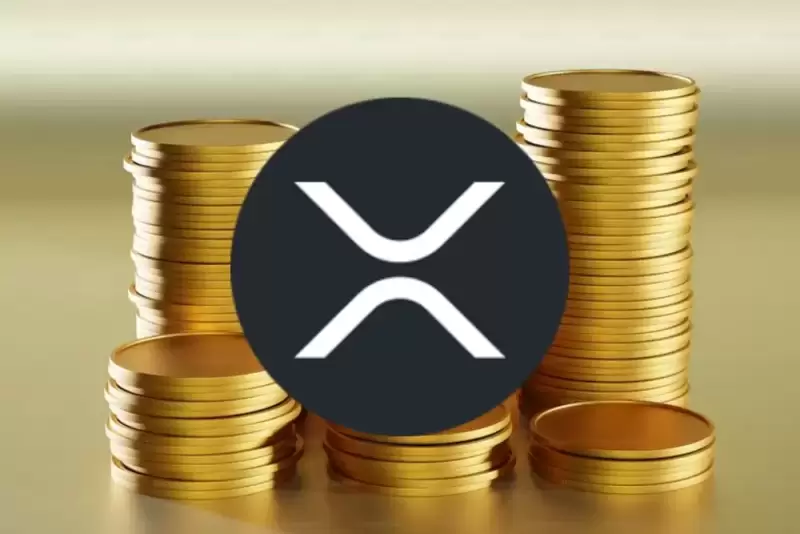 |
|
 |
|
 |
|
 |
|
 |
|
 |
|
 |
|
 |
|
 |
|
 |
|
 |
|
 |
|
 |
|
 |
|
 |
|
Cryptocurrency News Articles
Despite Inception, Ethereum Continues to Chase Bitcoin Without Ever Consistently Outperforming It
Apr 09, 2025 at 04:11 pm
Almost a decade after its inception, Ethereum continues to chase its biggest competitor, Bitcoin, without ever consistently outperforming it.

Almost a decade after its inception, Ethereum continues to chase its biggest competitor, Bitcoin, without ever consistently outperforming it. A recent analysis revealed that Ether has outperformed Bitcoin only on 15% of trading days since it entered the markets in 2015.
This data, highlighted by analyst James Check in a post on platform X on April 8, sheds light on the structural difficulties of the second-largest crypto asset by market capitalization.
While the two assets move largely in tandem, with both suffering losses of over 50% since the beginning of 2022, Bitcoin has managed to stay afloat, losing 6% on Monday, April 9, and remaining at a price point 275% higher than the peak of the bull cycle seven years ago.
According to CoinGecko, ETH reached 1,400 dollars in the early hours of the same day. In the last 24 hours, the asset has seen an additional 10% drop, falling below 1,450 dollars, a price lower than the peak reached during the 2018 market cycle.
According to Check’s analysis, which examined the period from August 2015 to April 2024, the relative strength of the two assets is evident in the ETH/BTC ratio.
This ratio, which measures the value of Ether compared to that of Bitcoin, is currently at a five-year low, reaching 0.018 on April 9 according to TradingView data. To find such a low level, one must go back to December 2019, when Ether had fallen to $125 and Bitcoin was hovering around $7,000.
This decline in the ratio reflects a true collapse in ETH prices, wiping out seven years of gains. In the last 24 hours, the asset has seen an additional 10% loss, falling below 1,450 dollars, a price lower than the peak reached during the 2018 market cycle.
According to CoinGecko, ETH reached 1,400 dollars in the early hours of April 9. In comparison, Bitcoin lost 6% on the same day, bringing it to 75,000 dollars—a level still 275% higher than the peak of the bull cycle seven years ago.
Concerns are growing within the Ethereum community
The disappointment is also felt among the most fervent supporters of Ethereum. Despite the love for the project, many are beginning to confront a difficult reality: that of stagnation.
Web3 researcher Stacy Muur commented in a post on X on April 8 that, while loving Ethereum, it is evident how the number of active addresses on the network has remained practically unchanged over the last four years.
This data point, usually used to measure the level of activity and adoption of a blockchain network, in the case of Ethereum, suggests a lack of significant growth.
According to Muur’s analysis, in 2020, the average was around 1.5 million active addresses per week, a figure that has remained relatively stable, even in periods of market peaks, such as the 2021 bull market.
This lack of growth in active addresses could explain ETH’s inability to regain ground compared to Bitcoin.
Despite concerns related to activity on the main network, some analysts highlight the fact that a significant portion of the traffic has shifted to second layer networks, known as Ethereum Layer-2.
According to data provided by L2Beat, these scalable solutions are experiencing remarkable growth in terms of value locked on-chain.
This suggests that the Ethereum ecosystem is indeed evolving, but in different directions, presenting a mixed picture for investors.
This could represent a glimmer of hope for the asset, which continues to be a pillar of the decentralized finance world (DeFi), despite the falling price.
Technical supports: are we approaching a possible rebound?
On the technical front, some sector analyses offer a less dramatic reading. Based on fractal patterns observed in the 2018 and 2022 cycles, the more optimistic observers believe that ETH is now at extremely oversold levels.
This could indicate that the bottom is near, estimated around 1,000 dollars, according to technical indicators.
According to sector analysis firm Standpoint, such technical indicators suggest that a consolidation phase could precede a potential rebound. However, at the moment, the narrative is dominated by concern and the unfavorable comparison with a Bitcoin that continues to excel not only in performance but also in interest from institutional investors.
The identity in crisis of Ethereum
The general picture highlights increasing pressure on Ethereum. Despite its innovative architecture for smart contracts and the immense ecosystem that has resulted from it, after the initial enthusiasm, Ether seems to have lost part of its appeal.
To this is added a complicated relationship between the price of the native
Disclaimer:info@kdj.com
The information provided is not trading advice. kdj.com does not assume any responsibility for any investments made based on the information provided in this article. Cryptocurrencies are highly volatile and it is highly recommended that you invest with caution after thorough research!
If you believe that the content used on this website infringes your copyright, please contact us immediately (info@kdj.com) and we will delete it promptly.
-

-

-

-

- As market confidence gradually returns in 2025, more attention is shifting toward tokens that not only survived the last cycle but are actively defining what comes next.
- Apr 18, 2025 at 06:05 am
- Ethereum (ETH), Toncoin (TON), and Solana (SOL) are each demonstrating renewed momentum, driven by user adoption, ecosystem maturity, and infrastructure expansion.
-

-

-

-

- Binance is helping governments establish strategic bitcoin reserves and develop regulatory frameworks
- Apr 18, 2025 at 05:55 am
- Richard Teng, CEO of Binance, revealed that the crypto exchange platform is helping several governments establish strategic bitcoin reserves and develop regulatory frameworks.
-





























































